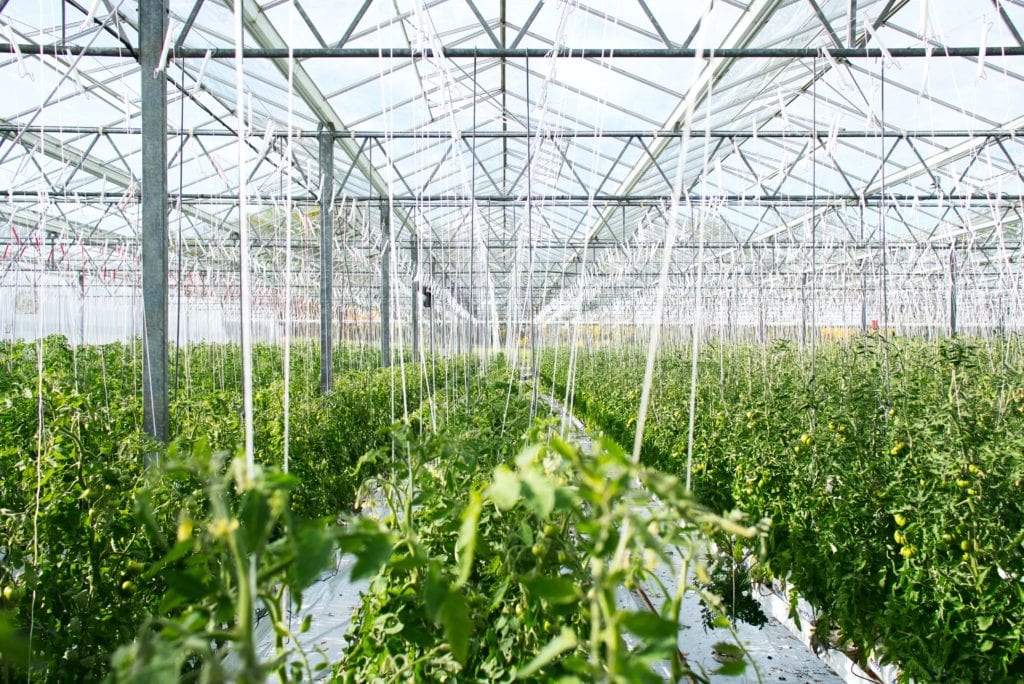This is an article that appeared on page 13 in the September edition of The Grower.

By Karen Davidson
Five greenhouse growers, all fierce competitors, are collaborating in an energy usage project in the area of Leamington, Ontario. Why? Quite simply, they want to keep the lights on.
That’s a bit of a stretch, but looking to the horizon, growers such as Luis Chibante and Lucas Semple know there isn’t enough electricity for the explosive growth in “lit” greenhouses. If the trend continues to use high-pressure sodium and LED lights, then the Independent Electricity System Operator (IESO) forecasts that the greenhouse sector will experience a 180 per cent increase in energy use by 2024.
Luis Chibante is the owner and general manager of Golden Acre Farms, operating 45 acres of high-wire cucumbers. He wants to build a smart grid so that excess energy can be sold to Hydro One.
A “smart” electrical grid comprises a variety of operational and energy measures to use power more efficiently. Think of such tools as smart meters, smart appliances and renewable energy sources linked together.
“With this system, electricity becomes a byproduct of our operation,” explains Chibante. “We do not want to become a utility.”
Lucas Semple, general manager for Under Sun Acres, has 45 acres of glass and double polyethylene greenhouses. He has a cogeneration system and closed loop water supply/ filtration system. Two of his greenhouses are not currently lit. His operation of sweet bell peppers offers an opportunity to examine the peaks and valleys of energy use.
These are only two examples of how Ontario’s greenhouse vegetable sector has grown to 3,200 acres of tomatoes, peppers and cucumbers with more growers pushing towards year round production.
It will be 2025 before a new transmission line is added to current capacity in the local area. “A shortage of power is predicted,” says Dave Arkell, president and CEO of 360 Energy. “That’s why we’re looking for solutions for our grower clients to optimize energy in a cost-effective way. It would be good not to rely on the grid all the time for economic and reliability reasons.”
A year ago, the Ontario Greenhouse Vegetable Growers (OGVG) expressed keen interest in partnering with Dr. Rupp Carriveau, director of the Environmental Energy Institute at the University of Windsor. He took a leading role in applying to the Grid Innovation Fund which is under the auspices of the IESO. He is researching the feasibility of various non-wire solutions for the greenhouse industry and is now analyzing energy use data from five greenhouse growers. “We want to leverage our knowledge of the growers’ transient load,” says Carriveau. “This is a very knowledgeable group of greenhouse growers. They push us with questions.”
For example, growers want to know the effect of adding solar shingles. Or changing the light spectrum. In dollars and cents, they want to know if these are wise investments and what the return on investment might be.
Launched in 2020, the three-year project started with identifying what forms of heat generation and lighting currently exist at each greenhouse. “We’re now at the point of drilling down into hard rock,” quips Dave Arkell.
“We are working with these clients to understand how they are buying energy and developing a plan to reduce costs. This requires benchmarking month by month.”
“When buying power from the grid, there are rate options that range from 14-18 cents/kw. But we’re looking at options that may cost less than 5 cents/kw. And we’re looking at mitigating usage in natural gas, hydro and water.”
With such large numbers at stake, it’s all the more urgent to explore cost-efficient options. The Ontario Greenhouse Vegetable Growers believe that the 1,300MW of load request not yet connected to the grid is a realistic estimate of demand.












